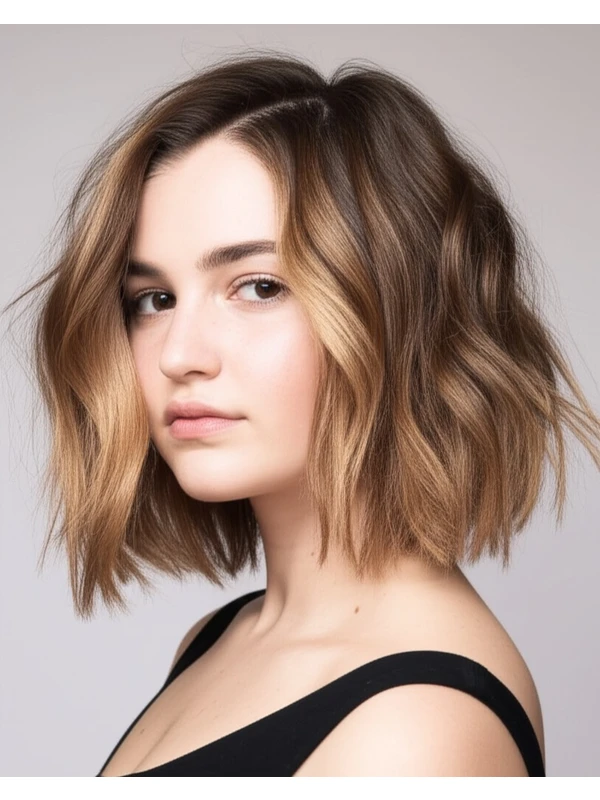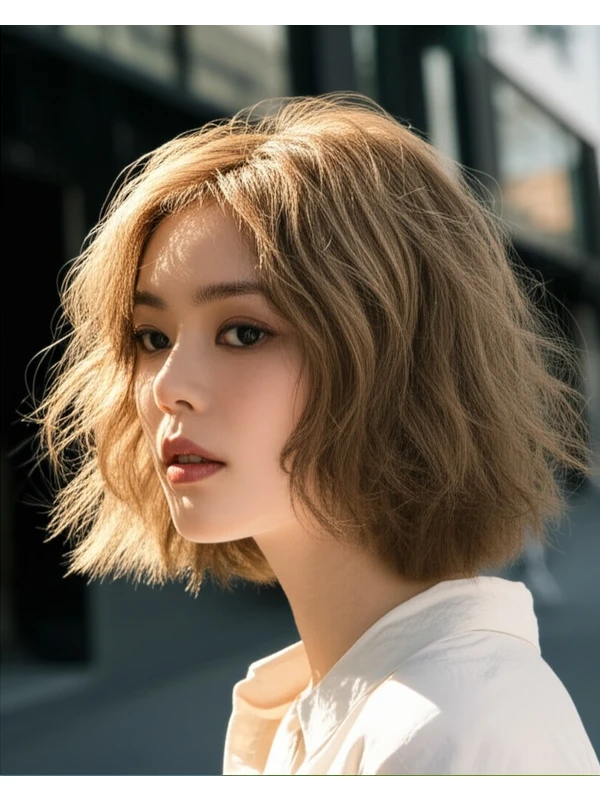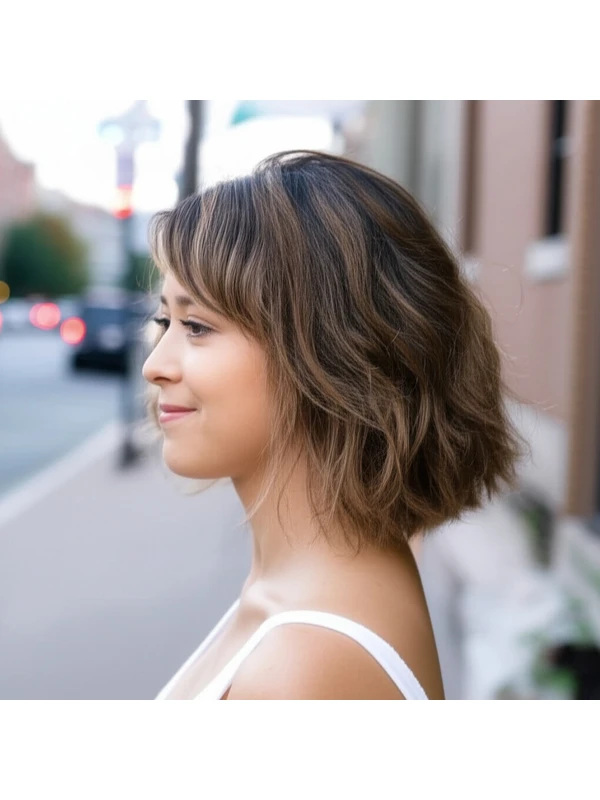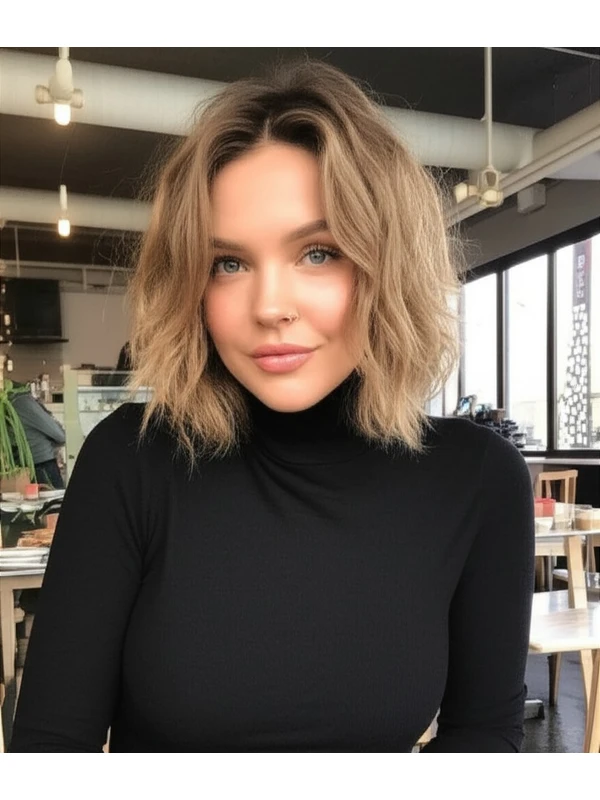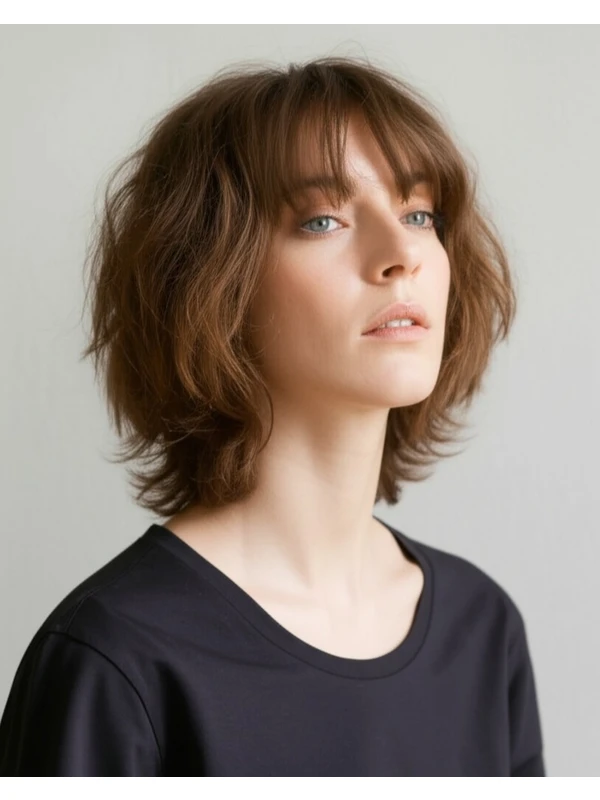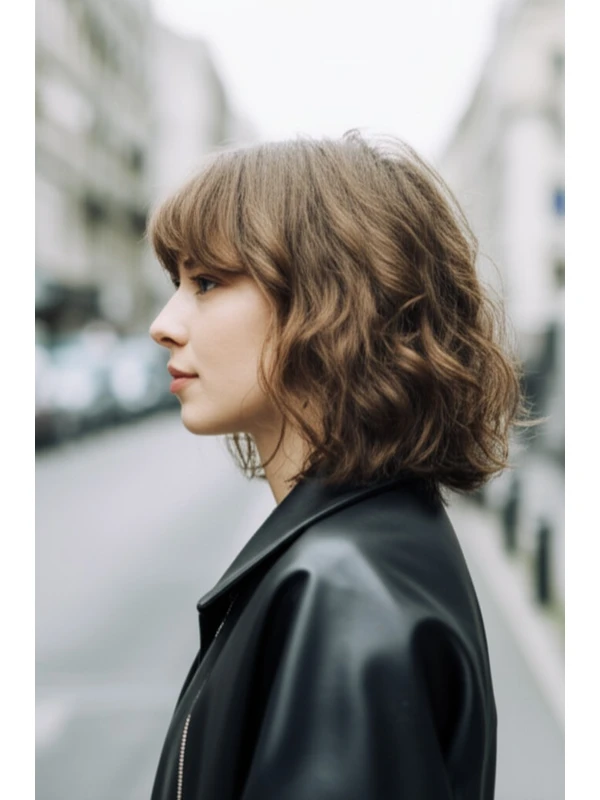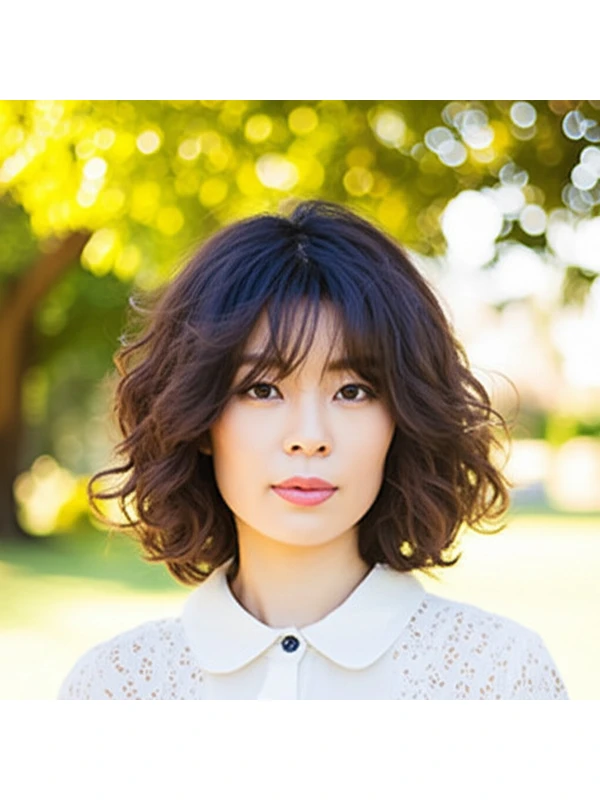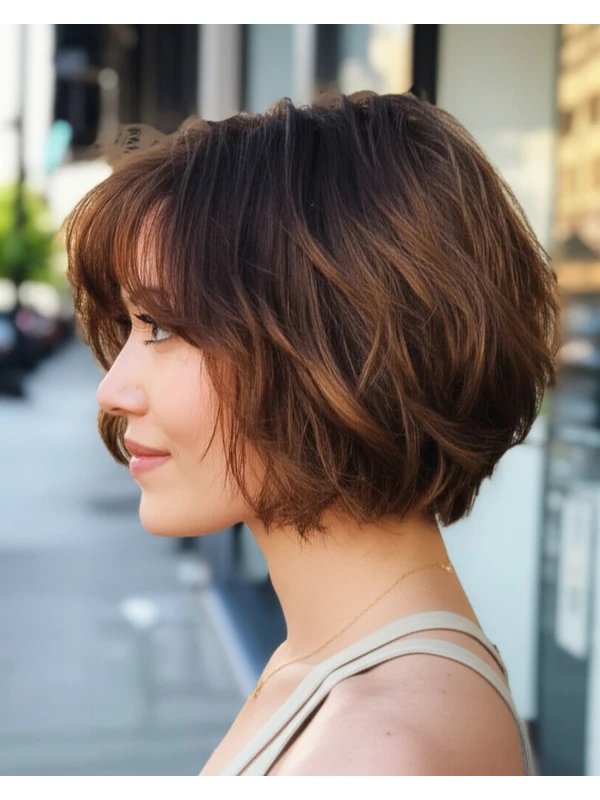#The Soft Mullet: A Modern Twist on a Retro Classic
The mullet is back! But forget the harsh, severe versions of decades past. Today’s "soft mullet" offers a playful, modern take that's surprisingly flattering and adaptable. This guide will break down everything you need to know about this increasingly popular hairstyle – from its origins to how it works with your unique features.
#1) Background & Definition: What is the Soft Mullet?
The soft mullet isn’t your dad’s mullet. It's a reimagining, softening the sharp lines of the original into something more blended and approachable. Think "shag-meets-mullet" with a focus on movement and texture.
- Cut Geometry: The defining characteristic is shorter hair in the front and around the face that gradually lengthens towards the back, creating a noticeable difference in length between the top/front and the nape of the neck. However, unlike traditional mullets which often have a very abrupt transition, soft mullets feature a more gradual fade.
- Key Features: Softness is key! Layering is crucial to avoid harsh lines. The front can be styled with or without bangs. The overall effect should feel effortless and cool.
- Typical Length Ranges: Generally, the shortest layers around the face fall between chin-length and jawline length. The back hair can range from collarbone-length to shoulder-length (or even slightly longer).
- Alternative Names: You might also hear it called a "wolf cut," "modern shag with a tail," or simply an “inverted bob” depending on the specific styling and layering.
#2) Face Shape Fit: Finding Your Angle
The soft mullet’s versatility is one of its biggest strengths, but understanding how to tailor it for your face shape will maximize its impact.
- Oval: Lucky you! This cut generally flatters oval faces beautifully. A full fringe or curtain bangs work exceptionally well, balancing the symmetry.
- Round: Soften a round face by opting for longer layers that start below the chin and angling away from the cheeks. Avoid blunt bobs or short, choppy fringes which can accentuate width. Side-swept bangs are your friend!
- Square: The soft mullet’s layered texture helps soften strong jawlines. A wispy fringe or face-framing layers will further diminish angularity.
- Heart: Volume at the crown and cheekbones balances a wider forehead in heart-shaped faces. Curtain bangs that blend seamlessly into the layers are ideal.
- Diamond: The soft mullet’s shorter front pieces help soften diamond shapes, highlighting the eyes and cheekbones. A side part adds asymmetry to break up the angularity.
- Oblong (Long): Shorter face-framing layers and a fringe can add width and visually shorten an oblong face. Avoid excessive length in the back that will elongate your silhouette further.
#3) Body Proportions & Height Guidance: Silhouette Savvy
The soft mullet plays with proportions, so consider your overall build when deciding on length and volume.
- Petite: Shorter lengths (chin to collarbone) work best to avoid overwhelming a smaller frame. Less volume at the crown is also beneficial.
- Average Height: Most lengths will suit you! Experiment with different volumes to find what feels most balanced.
- Tall: Longer lengths (shoulder-length or longer) can help balance your height, but be mindful of adding too much bulk that could make you appear even taller.
- Narrow Shoulders: Create the illusion of wider shoulders by adding volume at the sides with layers and styling techniques.
- Broad Shoulders: Keep the back section relatively streamlined to avoid emphasizing shoulder width.
- Short Neck: Avoid excessive volume at the nape of the neck, as it can accentuate a short neck. Opt for shorter lengths in the back that end above your collarbone.
- Long Neck: Longer hair and layers around the face help fill out a longer neck.
#4) Works Best With Hair Types & Densities: Texture Talk
The soft mullet’s adaptability extends to various hair types, but adjustments are often needed.
- Straight Hair: Layers will create movement and volume. A texturizing product can enhance the “soft” feel.
- Wavy Hair: This cut thrives on wavy textures! The layers accentuate natural waves. Air-drying with a curl cream is often all you need.
- Curly/Coily Hair: The soft mullet can be gorgeous, but communication with your stylist is key to account for shrinkage. Shorter lengths are usually best to avoid excessive bulk and maintain shape.
- Fine Hair: Layers add the illusion of volume. A volumizing mousse or root lift spray will enhance this effect.
- Medium Hair: The soft mullet generally works well, allowing for a good balance of layers and overall fullness.
- Thick Hair: Thinning shears can help remove bulk while maintaining density. Strategic layering is essential to prevent the cut from looking too heavy.
Shrinkage Note (Curls & Coils): Curly and coily hair shrinks significantly when dry. Communicate your curl pattern and desired length with your stylist so they can factor in this shrinkage during cutting. What looks like a shoulder-length cut wet might end up being chin-length dry!
#5) Styling Variations: From Casual to Chic
The soft mullet is surprisingly versatile, adapting to different occasions.
- Sleek vs. Textured: Sleek styles use smoothing serums and straighteners for a polished look. Textured styles embrace natural waves or curls with air-drying techniques and texturizing products.
- Middle vs. Side Part: A middle part creates symmetry; a side part adds softness and asymmetry, particularly flattering for round faces.
- Fringe Variations: Curtain bangs are the most popular choice, but wispy fringes or face-framing layers can also work beautifully.
- Occasion Styling: For casual days, air dry with texturizing spray. For the office, smooth out frizz and add a touch of shine. For evening events, try a sleek style with subtle waves.
#6) Maintenance: Keeping It Fresh
Regular trims are essential to maintain the soft mullet’s shape and prevent it from looking overgrown.
- Trim Cadence: Every 6-8 weeks is typical.
- At-Home Routine: Focus on moisturizing (especially for dry or curly hair). Air drying is often preferred for a softer look, but gentle heat styling can be used sparingly.
- Heat vs. Air Dry: Prioritize air-drying whenever possible to minimize damage and enhance natural texture.
- Product Checklist:
- Shampoo & Conditioner: Suitable for your hair type.
- Leave-in Conditioner: For moisture and detangling.
- Texturizing Spray/Mousse: To add volume and definition (especially for straight or fine hair).
- Curl Cream/Gel (for wavy, curly, coily): To define curls and control frizz.
- Smoothing Serum (optional): For sleek styles.
- Estimated Daily Styling Time: 5-20 minutes, depending on your styling preferences and hair type.
#7) Grow-Out Roadmap: The Evolution of the Style
The soft mullet evolves as it grows out.
- Months 1-3: The initial shape is most noticeable. Regular trims maintain the layers.
- Months 4-6: The back length starts to become more prominent, and you might need a trim to refine the lines. Consider adjusting the bangs if they feel too short or heavy.
- Maintaining Shape Between Cuts: Use styling products to enhance your natural texture and keep layers defined.
#8) Color Pairings: Elevating Your Look
Color can dramatically impact how the soft mullet looks!
- Cool Undertones (ash blonde, cool brown): Silver, icy blondes or cool-toned browns will complement these undertones beautifully.
- Warm Undertones (golden blonde, warm brown): Rich caramels, honey highlights, and copper tones enhance warmth.
- Low-Commitment Options: Balayage or babylights add dimension without a drastic color change. Face-framing highlights can brighten the face and accentuate layers.
#9) Season & Occasion Guide: Styling for Every Moment
- Spring/Summer: Embrace lighter, airier styles with minimal product. Highlight natural texture.
- Fall/Winter: Add depth and richness with warmer tones or a gloss to combat dryness. Sleek styles work well for more formal occasions.
- Work: A polished, low-maintenance style is key – think smooth layers and subtle face-framing.
- Weddings/Parties: Experiment with waves, curls, or an updo that showcases the layered shape.
- Formal Events: Consider a sleek, straightened version for a more sophisticated look.
#10) Cost & Time: Salon Insights
- Salon Time: Expect to spend between 1.5 - 3 hours in the salon, depending on your hair length and desired complexity of layering.
- Estimated Price Range: The cost will vary significantly based on location and stylist experience, but generally falls within a moderate-to-high price bracket.
#11) Pros & Cons: Weighing Your Options
Pros: Versatile, flattering for many face shapes, modern and stylish, relatively easy to maintain (with regular trims). Cons: Requires more frequent salon visits than some other styles, can look awkward during the grow-out phase if not properly maintained, may require specific styling techniques.
#12) Salon Consultation Script: Your Checklist
Here are some prompts you can use when discussing your soft mullet aspirations with your stylist:
- “I love the idea of a soft mullet but want to ensure it complements my face shape [mention your face shape].”
- "Can we discuss how layering will work with my hair texture and density?"
- "I'm concerned about shrinkage – can you factor that into the length when cutting?”
- "I prefer low-maintenance styling. What techniques would you recommend for air drying or minimal heat styling?"
- “Show me examples of soft mullets on people with similar face shapes/hair types to mine.”
FAQs:
- Is a soft mullet difficult to style? Not necessarily! While some styles require more effort, the beauty lies in its effortless look.
- Can I get a soft mullet if my hair is very short? It's possible, but it will have a different feel and may not be as dramatic.
- What’s the biggest mistake people make when trying this style? Not getting enough layers or choosing an inappropriate length for their face shape/hair texture.
- Can I do this myself at home? While possible, professional cutting is highly recommended to achieve a balanced and flattering result.
- How can I prevent my soft mullet from looking dated? Keep the lines soft and blended – avoid harsh angles or overly dramatic differences in length.
- What if I don't like bangs? The soft mullet looks great without bangs too! Focus on face-framing layers instead.
